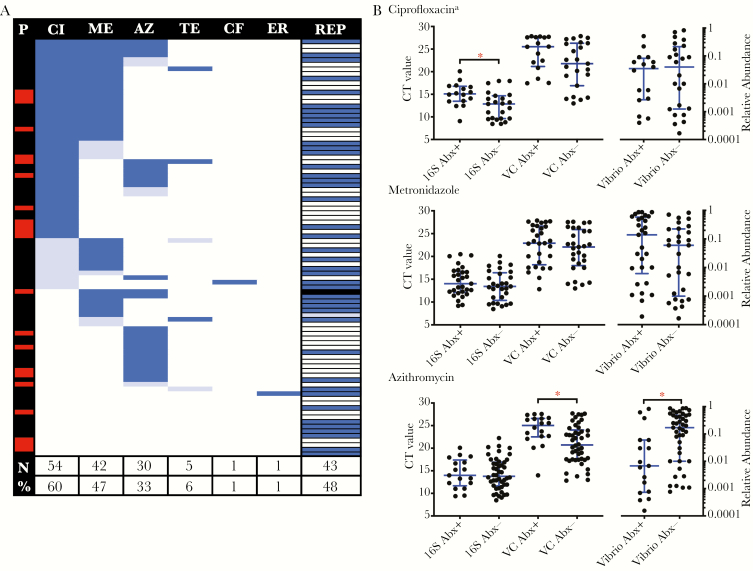Figure 3.
Frequency of antibiotic detection in stool specimens from patients with cholera and impact on Vibrio cholerae. A, Frequency of antibiotic detection by liquid chromatography/mass spectrometry and self-report (REP) among all patients with cholera from whom stool specimens were collected. The number of times (%) an antibiotic was detected across samples is shown at the bottom. The red lines at left denote positivity for phage, and the black line at right denotes an unknown history. Dark blue, positive result or self-report; light blue, trace detection; white, negative result or no self-report. B, Paired comparisons of total bacteria (16S ribosomal DNA) and V. cholerae by nanoliter quantitative polymerase chain reaction analysis, and the relative abundance of Vibrio species with (Abx+) and without (Abx-) detection of the specified antibiotic. Bars and whiskers denote medians and interquartile ranges, respectively. Analyses were restricted to samples without detection of trace antibiotic and phage. See Supplementary Table 2 for further details. AM, amoxicillin; AZ, azithromycin; CF, ceftriaxone; CI, ciprofloxacin; CT, cycle threshold; ER, erythromycin; ME, metronidazole, TE, tetracycline. *P < .05, by the Mann-Whitney U test, with adjustment for multiple comparisons. aSamples negative for ciprofloxacin were also negative for metronidazole.

